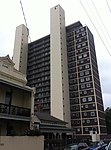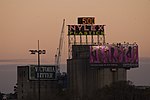Walsh Street police shootings
The Walsh Street police shootings were the 1988 murders of two Victoria Police officers: Constables Steven Tynan, 22, and Damian Eyre, 20. Tynan and Eyre were responding to a report of an abandoned car when they were gunned down about 4:50am in Walsh Street, South Yarra (a Melbourne suburb), on 12 October 1988.Four men, Victor Peirce, Trevor Pettingill, Anthony Leigh Farrell and Peter David McEvoy, were charged with murder and later acquitted by a jury in the Supreme Court of Victoria. Two other suspects, Jedd Houghton and Gary Abdallah, were shot and killed by Victoria Police before being brought to trial.During 2005, Wendy Peirce, widow of Victor, gave an interview to the mass media. In this interview, she stated that her late husband had planned and carried out the murders and that he was actually guilty as charged.
Excerpt from the Wikipedia article Walsh Street police shootings (License: CC BY-SA 3.0, Authors).Walsh Street police shootings
Walsh Street, Melbourne South Yarra
Geographical coordinates (GPS) Address Nearby Places Show on map
Geographical coordinates (GPS)
| Latitude | Longitude |
|---|---|
| N -37.832889 ° | E 144.98582 ° |
Address
Walsh Street
Walsh Street
3141 Melbourne, South Yarra
Victoria, Australia
Open on Google Maps









